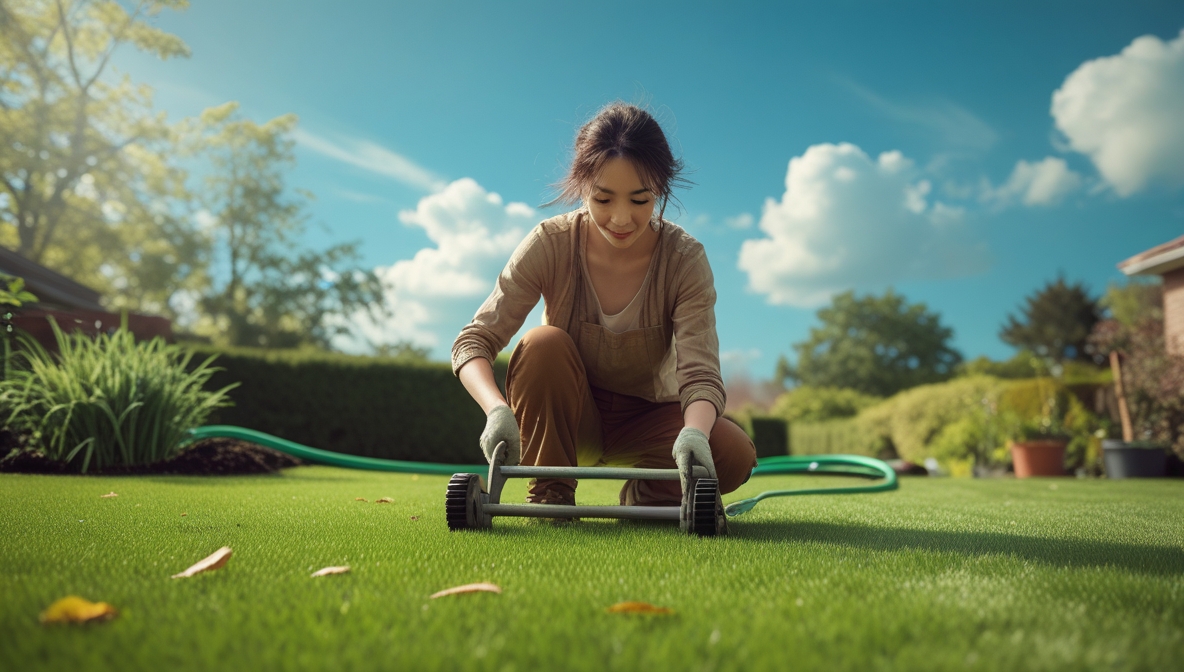Tired of a bumpy, compacted lawn that just won’t seem to thrive? Aeration might be the solution you’ve been searching for. This simple process can significantly improve your lawn’s health and overall appearance by allowing air, water, and nutrients to reach the roots more effectively. Whether you’re a seasoned gardener or just starting out, this guide will walk you through the essential steps of lawn aeration.
Why Aerate Your Lawn?
Aeration is like giving your lawn a deep tissue massage. Compacted soil, often caused by foot traffic, lawnmowers, and even weather, can restrict the flow of air and water to the roots. This can lead to weak, unhealthy grass that’s more susceptible to pests and diseases. Proper aeration creates air pockets in the soil, which allows roots to breathe and absorb nutrients, leading to a stronger, greener lawn.
A healthy, aerated lawn is also more resilient to drought and disease. The improved drainage also helps prevent waterlogging, a common issue that can damage grass roots. By regularly aerating, you’re essentially creating an optimal environment for your grass to thrive, making your yard a picture of vibrant green.
Tools for the Job
You’ve got several options for aerating your lawn, ranging from simple to more complex. A manual garden fork, while effective for small areas, can be labor-intensive. For larger lawns, a core aerator is the most common and efficient choice. These machines puncture the soil, removing small plugs of soil and creating those essential air pockets.
Beyond core aerators, there are also spike aerators, which are less intensive but still beneficial. Consider the size of your lawn and your budget when selecting your aeration tool. If you’re renting, be sure to ask about the tool’s specifications, and whether you need to do anything in advance, like preparing the soil. Regardless of the tool you choose, make sure it’s in good working order.
The Aeration Process
The aeration process itself is generally straightforward. First, ensure the soil is reasonably moist, but not waterlogged. Wet soil can make the process more difficult. Follow the instructions for your chosen tool carefully. Ensure proper depth and spacing. For core aerators, the recommended depth is usually about 2-4 inches. A good guide to depth is to maintain consistency across the entire lawn.
Once you’ve completed the aeration, it’s crucial to immediately distribute any removed soil plugs. And be sure to avoid walking on the freshly aerated areas for a few days. This allows the soil to settle properly and the grass to re-establish itself. This allows for the new air pockets to become fully incorporated into the soil.
Maintaining a Healthy Lawn
Aeration is just one piece of the puzzle in maintaining a healthy lawn. Regular mowing, watering, and fertilization are also vital. Proper mowing height, feeding your lawn with the appropriate nutrients, and avoiding overwatering are key to continued success. Aeration is a powerful tool to use in conjunction with these other practices.
Remember to keep your lawnmower blades sharp and regularly remove debris. This will create optimal conditions for your newly aerated lawn to thrive. By consistently following these practices, you’ll ensure your lawn remains healthy, vibrant, and beautiful throughout the seasons.
Aeration may seem like a tedious task, but the benefits to your lawn are considerable. By regularly aerating your lawn, you are investing in its long-term health and beauty. A healthy, well-aerated lawn is a testament to proper care and attention, and it will reward you with a stunning, thriving yard.






